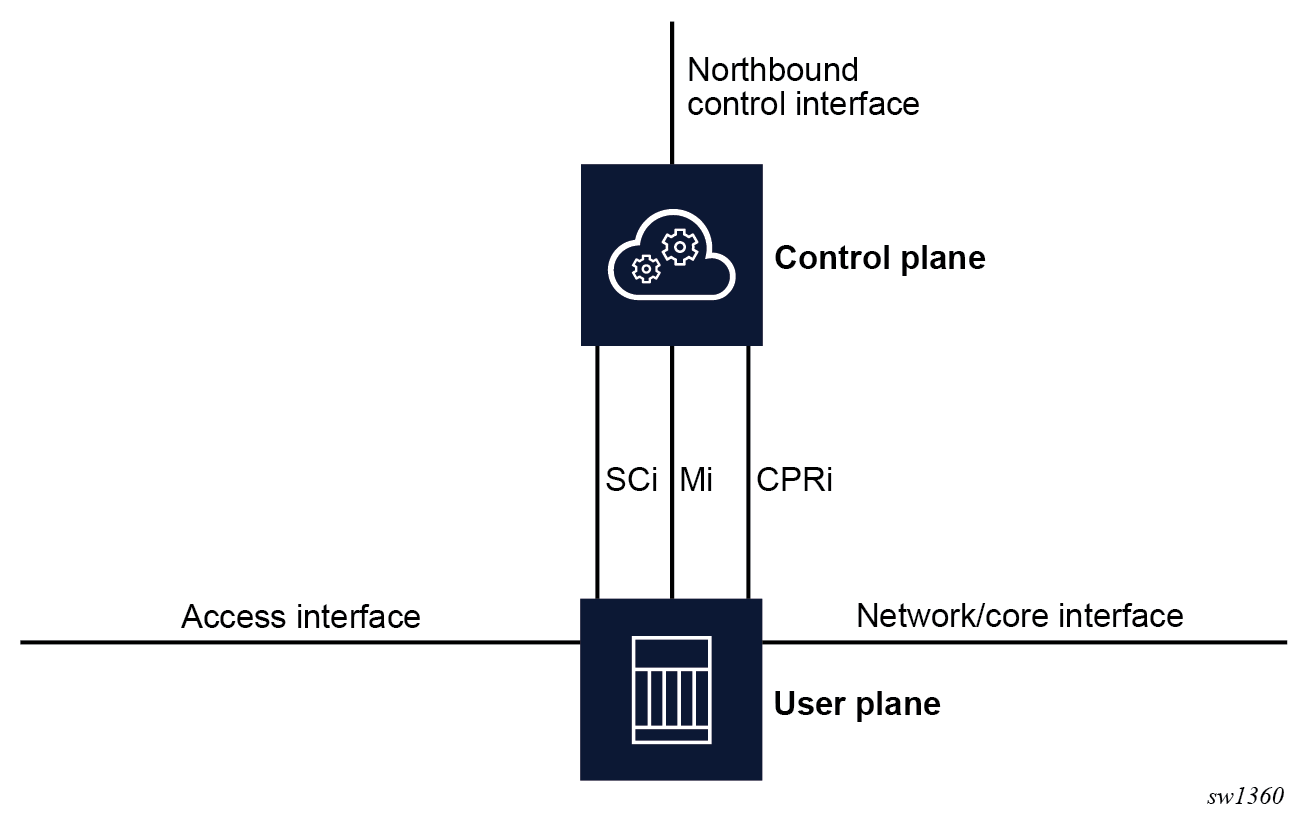Introduction to CUPS
CUPS is an architecture that gains popularity in the mobile core. The architecture was first adopted in the 4G Long Term Evolution (LTE) mobile core and later became the standard architecture for the 5G core. In 2019, BBF began a BNG CUPS project and subsequently standardized the BNG CUPS architecture in TR-459, TR-459.2, and TR-459.3. BBF continues to define new standardized features and solutions contributed by service providers and vendors.
BNG CUPS
Nokia offers the standard BNG CUPS features defined by BBF, the Nokia CUPS solution includes fixed wireless access (FWA) and resiliency solutions. The following figure shows a high-level CUPS architecture as defined in TR-459.
- state control interface (SCi)
- control packet redirect interface (CPRi)
- management interface (Mi)

BBF defines BNG CUPS as a disaggregated BNG (DBNG) where the CP of the DBNG is known as the DBNG-CP and the UP of the DBNG is known as the DBNG-UP. The following terms are used interchangeably in the industry:
- DBNG and BNG CUPS
- user plane (UP) and data plane (DP)
DBNG-CP overview
The DBNG-CP provides subscriber management functions including authentication, authorization, and accounting (AAA), IP address management, and policy management. The DBNG-CP has northbound control interfaces (NCIs) to communicate with external systems such as remote authentication dial in user service (RADIUS) servers and policy services. The DBNG-CP uses standard interfaces defined in TR-459 to interact with DBNG-UP like programing data traffic forwarding rules.
DBNG-UP overview
- traffic management, including NAT and multicast replication
- policy enforcement
- subscriber statistics collection
DBNG interfaces
State control interface
The state control interface (SCi) is responsible for programming subscriber data forwarding rules on the UP. The CUPS solution uses the 3GPP packet forwarding control protocol (PFCP) protocol as specified in 3GPP TS 29.244. 3GPP designed the PFCP to be fully extensible. To accommodate the broadband wireline use case, BBF extended the PFCP information elements (IEs) and published the extension in TR-459. Nokia extended the PFCP IE set to offer additional feature sets.
For wireline access, the SCi programs, at minimum, the following two types of rules:
- control packet redirection rules – bidirectional rules to redirect subscriber wireline control packets, via the UP, from the residential gateway (RG) to the CP and from the CP to the RG
- subscriber data forwarding rules – bidirectional rules to forward subscriber
traffic between the access interface and the network interfaceNote: The terms "network interface" and "core interface" are used interchangeably in the industry.
See the MAG-c PFCP Interface Description Guide for more information about the SCi and the PFCP.
Control packet redirect interface
- per-session CPRi tunnels
- common CPRi tunnels
See the MAG-c PFCP Interface Description Guide for more information about the CPRi and GTP-U.
Management interface
The DBNG-CP uses the management interface (Mi) to program the DBNG-UP for everything that is not related to subscriber forwarding rules. BBF TR-459 has no specifications for this interface.